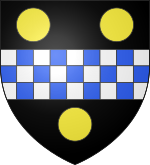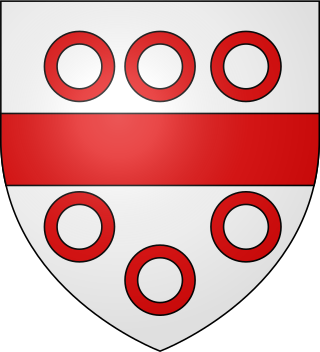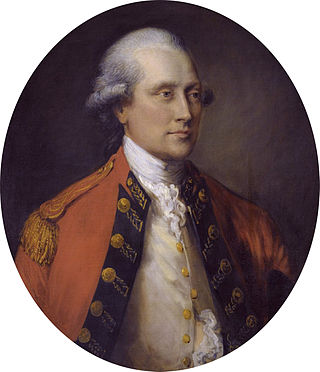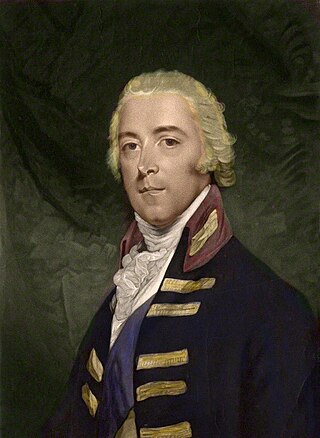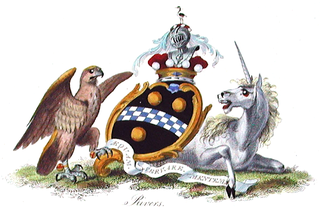| | | | Peter Temple |
|
| | | | | | | | | | | | | |
| | | | | | | | | |
| Anthony Temple | | | | | | John Temple |
|
| | | | | | | | | | | | | | | | | | | | | | |
| | | | | | | | | | | | | |
| | | | | | | | | | | | | | | | | | Baronet, of Stowe, in the County of Buckingham, 1611 |
|
William Temple
1555–1627 | | Thomas Temple
1567–1637
1st Baronet, of Stowe | | | | | | | | | | Alexander Temple
1583–1629 |
|
| | | | | | | | | | | | | | | | | | | | | | |
| | | | | | | | |
| | | | | | | | | | | | | | | | | | | | | | | | Baronet, of Frankley, in the County of Worcester, 1618 |
|
John Temple
1600–1677 | | Peter Temple
1592–1653
2nd Baronet, of Stowe | | | | | | John Temple
1593–1632 | | James Temple
1606–1680 | | Thomas Lyttelton
1593–1650
1st Baronet, of Frankley |
|
| | | | | | | | | | | | | | | | | | | | | | | | | | | | |
| | | | | | | | | | | |
| | | | | | | | | | Baronet, of Stowe, in the County of Buckingham, 1662 | | | | | | | | | | | | | | |
|
| | | | | | | | | | Thomas Temple
1613/14–1674
1st Baronet, of Stowe | | Peter Temple
1613–1660 | | Henry Lyttelton
1624–1693
2nd Baronet, of Frankley | | Charles Lyttelton
1628–1716
3rd Baronet, of Frankley |
|
| | | | | | | | | | Baronet, of Stowe (1662 creation) extinct, 1674 | | | | | | | | | | | | | | | | | | | |
| | | | | | | | | | | | | |
John Temple
1632–1705 | | Richard Temple
1634–1697
3rd Baronet, of Stowe | | | | | | Eleanor Temple
d. 1729
m. Richard Grenville | | | | | | | | | | | William Temple
d. 1706 |
|
| | | | | | | | | | | | | | | | | | | | | | | | | | | | | | | | | | | | | |
| | | | | | | | | | | | | | | | | | | |
| Viscount Palmerston and Baron Temple, of Mount Temple in the County of Sligo, 1723 | | Baron Cobham, of Cobham in the County of Kent (6th creation), 1714
Viscount Cobham and Baron Cobham, of Cobham in the County of Kent (7th creation), 1718 | | Earl Temple, 1749 | | | | | | | | | | | | | | | | | | | | | | | | | |
|
Henry Temple
c. 1673–1757
1st Viscount Palmerston and Baron Temple | | Richard Temple
1675–1749
1st Viscount Cobham and Baron Cobham, 4th Baronet Temple, of Stowe | | Hester Grenville
c. 1690–1752
1st Countess Temple, 2nd Viscountess Cobham and 2nd Baroness Cobham | | Richard Grenville
1678–1727 | | Christian Temple | | Thomas Lyttelton
1686–1751
4th Baronet, of Frankley | | William Temple
1694–1760
5th Baronet Temple, of Stowe | | Peter Temple
d. 1761
6th Baronet Temple, of Stowe |
| | | |
| | | | | Barony Cobham (1714 creation) extinct, 1749 | | | | | | | | | | | | | | | | | | | | | | | | | | | |
|
| Henry, Lord Temple | | | | | | | | | | | | | | | | | | | | | | | | | | | | | | | | Richard Temple
1731–1786
7th Baronet Temple, of Stowe |
| | | | | | | | | | | | | | | | |
| | | | | | | | | | | | | | | | | | | | Baron Lyttelton (1st creation), 1756 | | Baron Westcote, 1776
Baron Lyttelton (2nd creation), 1794 | | | | | | Baronetcy Temple, of Stowe dormant, 1786 |
|
Henry Temple
1739–1802
2nd Viscount Palmerston and Baron Temple | | Richard Grenville-Temple
1711–1779
2nd Earl Temple, 3rd Viscount Cobham and Baron Cobham | | George Grenville
1712–1770 | | Hester Grenville
1720–1803
Baroness Chatham
m. William Pitt the Elder, Earl of Chatham and Viscount Pitt | | George Lyttelton
1709–1773
1st Baron Lyttelton, 5th Baronet, of Frankley | | William Henry Lyttelton
1724–1808
1st Baron Lyttelton |
|
| | | | | | | | | | | | | | | | | | | | | | | | | | | | |
| | | | | |
| | | | | Marquess of Buckingham, 1784 | | Baron Grenville, of Wotton under Bernewood in the County of Buckingham, 1790 | | | | | | | | | | | | | | | |
|
| | | | | George Nugent-Temple-Grenville
1753–1813
1st Marquess of Buckingham, 3rd Earl Temple, 2nd Earl Nugent, 4th Viscount Cobham and Baron Cobham | | William Wyndham Grenville
1759–1834
1st Baron Grenville | | William Pitt the Younger
1759–1806 | | Thomas Lyttelton
1744–1779
2nd Baron Lyttelton, 5th Baronet, of Frankley | | | | | |
|
| | | | | | | | | | Barony Grenville extinct, 1834 | | Barony Lyttelton and Baronetcy, of Frankley extinct, 1779 | | | | | | | | | |
|
| | | | | Duke of Buckingham and Chandos, Marquess of Chandos and Earl Temple of Stowe, 1822 | | | | | | | | | | | | | | | | | | |
| | | | | |
Henry John Temple
1784–1865
3rd Viscount Palmerston and Baron Temple | | Richard Temple-Nugent-Brydges-Chandos-Grenville
1776–1839
1st Duke of Buckingham and Chandos, Marquess of Chandos, and Earl Temple of Stowe, 2nd Marquess of Buckingham, 3rd Earl Nugent, 4th Earl Temple, 5th Viscount Cobham and Baron Cobham | | | | | | | | | | George Fulke Lyttelton
1763–1828
2nd Baron Lyttelton | | William Henry Lyttelton
1782–1837
3rd Baron Lyttelton |
|
| | | | | | | | | | | | | | | | | | | | | | | | |
|
| | | | Richard Plantagenet Temple-Nugent-Brydges-Chandos-Grenville
1797–1861
2nd Duke of Buckingham and Chandos, Marquess of Chandos, and Earl Temple of Stowe, 3rd Marquess of Buckingham, 4th Earl Nugent, 6th Viscount Cobham and Baron Cobham | | | | | | | | | | | | | | | | | |
|
| | | | | | | | | | | | | | | | | | | | | | | | | |
| | | | |
| | | | Richard Plantagenet Campbell Temple-Nugent-Brydges-Chandos-Grenville
1823–1889
3rd Duke of Buckingham and Chandos, Marquess of Chandos, and Earl Temple of Stowe, 4th Marquess of Buckingham, 5th Earl Nugent, 6th Earl Temple, 7th Viscount Cobham and Baron Cobham | | Anna Eliza Mary (Temple-Nugent-Brydges-Chandos-Grenville) Gore-Langton
1820–1879 | | William Henry Powell Gore-Langton
1824–1873 | | | | | | George William Lyttelton
1817–1876
4th Baron Lyttelton |
| |
| | | | Dukedom of Buckingham and Chandos, Marquessates of Buckingham and Chandos, and the Earldoms of Temple (1st creation) and of Nugent extinct, 1889 | | | | | | | | | | | | | | | | | | | |
| | | |
| | | | | | | | William Stephen Temple-Gore-Langton
1847–1902
4th Earl Temple of Stowe | | | | | | | | | | Charles George Lyttelton
1842–1922
8th Viscount Cobham and Baron Cobham |
|
| | | | | | | | | | | | | | | | | | | | | | | | | | |
| | | | | | | | | | |
| | | | Algernon William Stephen Temple-Gore-Langton
1871–1902
5th Earl Temple of Stowe | | Chandos Graham Temple-Gore-Langton
1873–1921 | | Evelyn Arthur Grenville Temple-Gore-Langton
1884–1972 | | | | | | John Cavendish Lyttelton
1881–1949
9th Viscount Cobham and Baron Cobham |
|
| | | | | | | | | | | | | | | | | | | | | | | | | | |
| | | | | |
| | | | Chandos Grenville Temple-Gore-Langton
1909–1966
6th Earl Temple of Stowe | | Ronald Stephen Brydges Temple-Gore-Langton
1910–1988
7th Earl Temple of Stowe | | Walter Grenville Algernon Temple-Gore-Langton
1924–2013
8th Earl Temple of Stowe | | | | | | Charles John Lyttelton
1909–1977
10th Viscount Cobham and Baron Cobham |
|
| | | | | | | | | | | | | | | | | | | | | | | | | |
| | | | | |
| | | | | | | | | | | | James Grenville Temple-Gore-Langton
b. 1955
9th Earl Temple of Stowe | | John William Leonard Lyttelton
1943–2006
11th Viscount Cobham and Baron Cobham | | Christopher Charles Lyttelton
b. 1947
12th Viscount Cobham and Baron Cobham |
|
| | | | | | | | | | | | | | | | | | | | | | | | |
|
| | | | | | | | | | | | Rowan Caradoc Temple-Gore-Langton
b. 1987 | | | | | | Oliver Christopher Lyttelton
b. 1976 |
|
| | | | | | | | | | | | Heir apparent to the Earl Temple of Stowe | | | | | | Heir apparent to the Viscount of Cobham |
|


